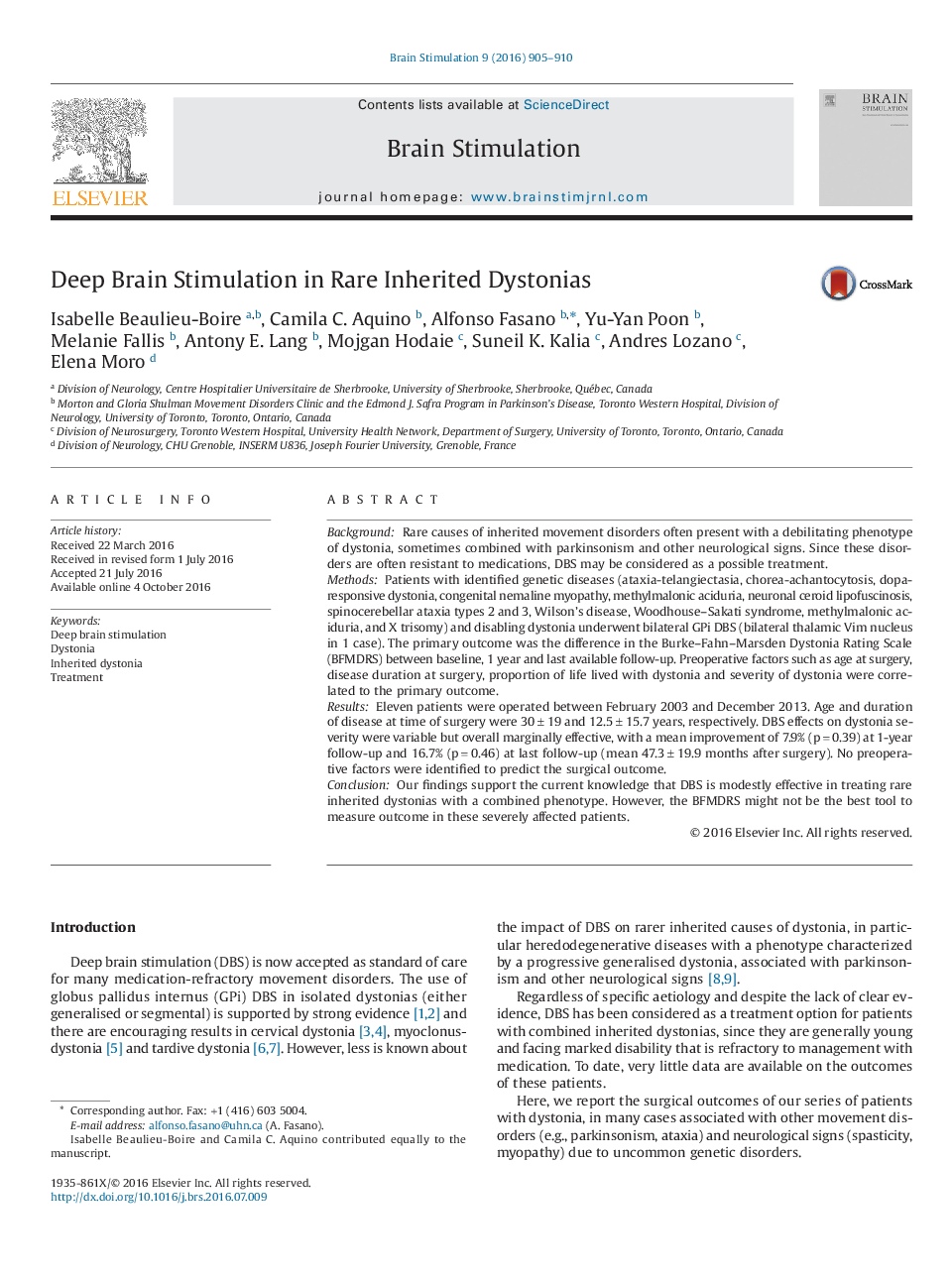| Article ID | Journal | Published Year | Pages | File Type |
|---|---|---|---|---|
| 5626894 | Brain Stimulation | 2016 | 6 Pages |
â¢Surgical outcomes of DBS in patients with inherited dystonia are reported.â¢DBS effects on dystonia severity were variable but overall marginally effective.â¢No preoperative factors were identified to predict the surgical outcome.â¢Reports of DBS in rare inherited dystonias are needed to help guide treatment.
BackgroundRare causes of inherited movement disorders often present with a debilitating phenotype of dystonia, sometimes combined with parkinsonism and other neurological signs. Since these disorders are often resistant to medications, DBS may be considered as a possible treatment.MethodsPatients with identified genetic diseases (ataxia-telangiectasia, chorea-achantocytosis, dopa-responsive dystonia, congenital nemaline myopathy, methylmalonic aciduria, neuronal ceroid lipofuscinosis, spinocerebellar ataxia types 2 and 3, Wilson's disease, Woodhouse-Sakati syndrome, methylmalonic aciduria, and X trisomy) and disabling dystonia underwent bilateral GPi DBS (bilateral thalamic Vim nucleus in 1 case). The primary outcome was the difference in the Burke-Fahn-Marsden Dystonia Rating Scale (BFMDRS) between baseline, 1 year and last available follow-up. Preoperative factors such as age at surgery, disease duration at surgery, proportion of life lived with dystonia and severity of dystonia were correlated to the primary outcome.ResultsEleven patients were operated between February 2003 and December 2013. Age and duration of disease at time of surgery were 30â±â19 and 12.5â±â15.7 years, respectively. DBS effects on dystonia severity were variable but overall marginally effective, with a mean improvement of 7.9% (pâ=â0.39) at 1-year follow-up and 16.7% (pâ=â0.46) at last follow-up (mean 47.3â±â19.9 months after surgery). No preoperative factors were identified to predict the surgical outcome.ConclusionOur findings support the current knowledge that DBS is modestly effective in treating rare inherited dystonias with a combined phenotype. However, the BFMDRS might not be the best tool to measure outcome in these severely affected patients.
